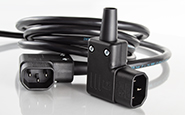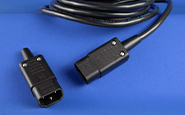International Safety Compliance is a Corporate-Wide Effort
Regardless of which design approach is selected for the product being exported, a successful international agency compliance effort must be regarded as a corporate-wide effort. Although it may begin with engineering, it must involve production, quality, purchasing, legal, insurance, and marketing in order to be effective. Because it is essential that all of these groups and influences work cooperatively towards the same goals, active support by top management is extremely important. This support should come in the form of a clear corporate policy statement that defines the corporate responsibility to provide products which comply with national and international regulations. It should also define which agency requirements (such as VDE) and which standards (such as IEC) should be satisfied.
A quality system certified to ISO 9000 is an essential element of the certification process at some European agencies. They take the position that they will test a product at the beginning of its life cycle and they may test periodically. A quality system that assures that the same product is going to be produced continually is an essential part of the process.
Implementing a Corporate Safety Policy
A strategy that implements the corporate safety policy commitment should include the following:
- Identification of a person who has overall responsibility for corporate compliance with international product safety regulations.
- Definition of responsibilities of all departments and groups involved in the compliance effort.
- Determination of specific regulations or standards which must be met as well as a listing of required agency approvals which will apply to the corporation’s products.
The international regulations issue should be incorporated in the product design or engineering effort right from the beginning. This will reduce the amount of effort and cost that will otherwise be wasted in changes and corrective actions that might be required.
Your designated Compliance Engineer should play an active role in the product’s development, preferably beginning with the investigation stage, in order to determine how international requirements will affect the overall product design. The Compliance Engineer should also work closely with the product’s designers to evaluate prototypes and subassemblies in order to eliminate problems while it is still relatively inexpensive to do so. Finally, the Compliance Engineer should participate actively in regular design reviews.
Operating, maintenance, and service manuals deserve special attention because of special regulations on documentation that exist in many European countries. Ideally, the product’s documentation should be developed simultaneously with the product and should be subject to regular review by the Compliance Engineer. It is important, and sometimes mandatory, to provide safety instructions in the language of the country the product is sold in.
Calibrated test equipment necessary to duplicate and anticipate tests by the various international test agencies should be available during the product design process. Prototypes and subassemblies can then be tested in order to verify compliance with international safety standards. Calibration to the appropriate national bureau of standards is mandatory at all safety agencies.
Test equipment should include a 50Hz power source capable of providing power with voltages ranging from 95 to 255VAC. Since 50Hz testing is usually the most severe, it is mandatory for any product being rated for service at 50Hz.
Marketing and sales personnel can provide valuable feedback concerning the regulatory climate of each target marketplace. When the marketing staff is actively involved in the process, it can provide information about requirements and preferences and the differences between them. Marketing can generally assist in determining which standards must be met and to what degree agency approvals will actually benefit sales. It is essential that literature and advertising be carefully evaluated with regard to product safety and potential legal liabilities.
The after-sales service organization can make an important contribution by incorporating safety checks on the product at the time that it is subject to field servicing. The service department can also modify products to comply with changing safety regulations and keep an eye out for customer modifications to equipment that may impact safety and raise the potential of an eventual product liability claim.
An established system of auditing products after they have been released to manufacturing to assure continued compliance with safety regulations is important. Furthermore, the establishment of a product-recall system which allows the manufacturer to locate products that have already been sold to clients may be required by some regulatory agencies or Certified Quality Systems and may also reduce insurance rates.
A library of international safety and test standards is a must. This library should include applicable IEC publications, as well as specific national standards applicable to each of the target markets. See the guide to International Standards Publications for a list of some recommended documents.
Working with Safety Agencies
The first step should be to identify the appropriate agencies in each of your target markets.
Contact each of the agencies early in the design process of the product to obtain the following:
- Copies of applicable agency standards
- Procedures and forms required for submittal
- Complete cost for the test project
- Number of samples and spare parts required
- documentation expected by the agency to be supplied with the submittal
The following is a list of items that are generally necessary for successful agency submittal, regardless of the agency. Not all of these items are always necessary; the agencies should be contacted to determine precise, current requirements.
- Completed application forms or contract
- Corporate name(s) under which the approval is to appear
- Designation of the party responsible for the investigation (this could be an agent or party other than the manufacturer)
- Designation of the party responsible for payment
- Sufficient samples of the product under investigation
- Spare parts and subassemblies (usually needed for fault testing, special test, repairs, or for constructional review)
- Preliminary deposit or evaluation fee
- Location of all facilities that will manufacture the product
- Unpotted transformer (for verification of construction)
- All product manuals: operating, maintenance, repair, and installation instructions
- Any additional equipment needed to operate the product
- Description (manufacturer, part number, electrical rating) of all critical components, including agency approvals. In some cases, the actual license issued by the agency, to the manufacturer of the part.
- Completion of any information request forms provided by the agency
- All electrical ratings of the product
- Description of insulation systems (e.g. transformer); describe insulation material, thickness, layers, configurations, etc.
- Product description and dimensions






